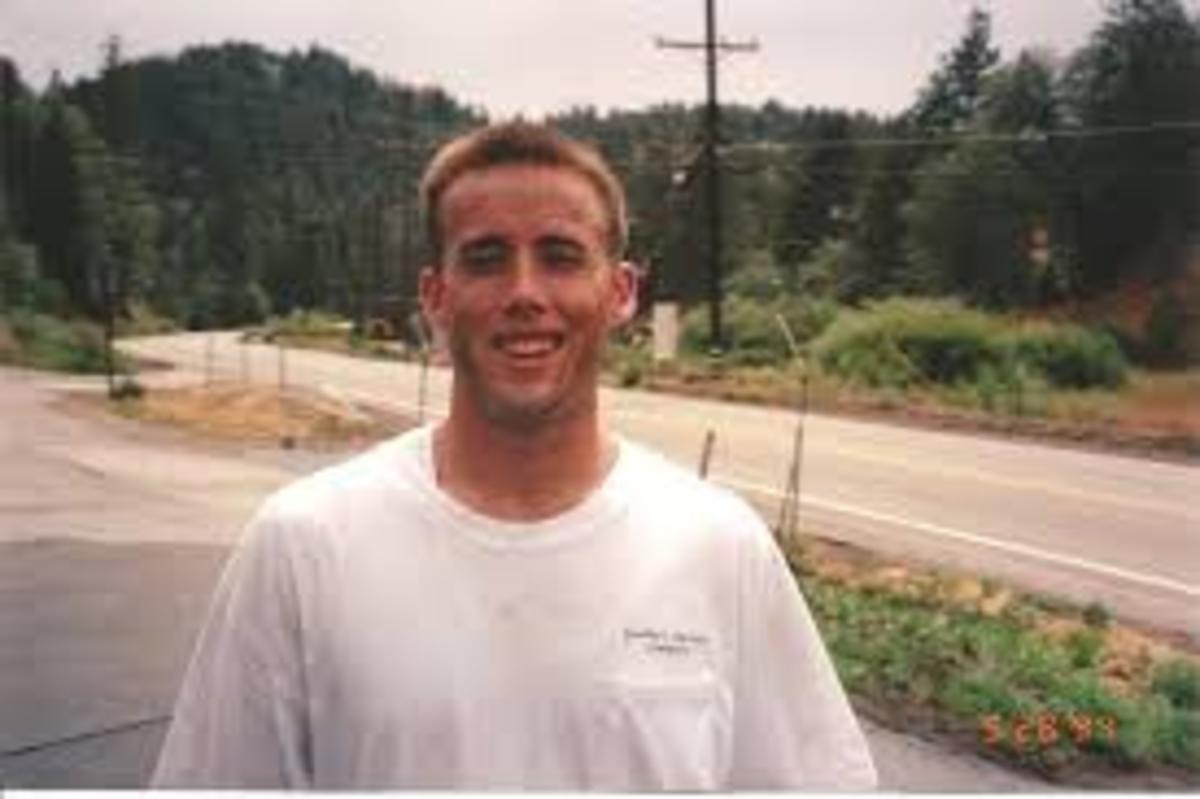The Many Lies of Jodi Arias

Forensic Linguistics-Who Knew?
Surely the most intriguing aspect of the Jodi Arias case is the gargantuan nest of lies she built around the death of Travis Alexander. Lies rolled off her tongue like honey. She lied to virtually every single person who was involved in her trial, including a national TV audience, and the jury who convicted her!
Prolific liars develop complex speech patterns that become second nature to them. Their phoney baloney usually contains very little substance, because their goal is to conceal, withhold or distort vital information. Using a method called discourse analysis, language experts found that certain words and word pairs, called linguistic devices appear more often in deliberate lies than in truth-telling.
Deception is also achieved by using an emotional tone of voice and emotion laden words. These draw the listener into a false story by appealing to sympathy or kindness. When Jodi Arias cried during cross examination, for example, even the firebrand prosecutor backed down ever so slightly. But, it didn't take him long to reframe the moment and refocus the jury: "Were you crying when you stabbed Mr. Alexander?" he asked (TheLipTV).
How much do I love thee
Let me count the lies
— Juan Martinez (NJSolutions)I - Lack of commitment to statements
1) Equivocation
Jodi routinely qualified her statements with conditional words and word pairings which convey uncertainty-I'm guessing or I believe, should have, could have. Equivocation was a way to deflect any possible judgement or blame that was coming her way. During cross examination, she withheld clear statements concerning her crime and tried desperately to avoid answering yes or no.
2) Non Specific Qualifiers
Jodi's narrative was peppered with non specific words called linguistic hedges-- some, forever and ever, sort of or anybody. These are qualitative, subjective expressions that can't be measured or verified, but they allowed her to stall and avoid clarity.
"I drove forever and ever until I was in the middle of the desert" (Choudhury).
This statement was part of her false intruder story. She left the crime scene in a fog, she said, so she couldn't remember exactly where she stopped her car and disposed of the weapons. Jodi was also vague concerning why she didn't call for help. She was skirting the obvious question. Why didn't she go to a neighbours' house or call 911?
“I didn't call anybody or tell anybody" (Choudhury).
Here is an exchange with the State Prosecutor, Juan Martinez who challenged Jodi's 'I grabbed a gun from his closet' story. He questioned how tall she was compared to the top shelf and he showed crime scene photos of the closet. It was plain from Jodi's restrained hostility on the witness stand, that she did not have PTSD flashbacks under pressure, nor did she collapse in tears. She boldly talked back to Martinez and held her own, contrary to the passive victim image she wished to portray.
J. (Conditional, evasive) I can make eye contact with the picture there on the second shelf from the top....sort of.
M: (Confronts evasion) I would like a bit of certainty from you.
J. (Combative, Evasive, Conditional) Well I can't give you certainty unless I'm standing in the closet (babydoll3243).
3) Attenuated speech
False narratives contain several linguistic strategies to keep stories vague and short on factual information. Many times under cross examination, she used evasive tactics such as requesting clarification or stalling on a word definition. Occasionally she even shrugged her shoulders as if to brush off the question. Attenuated speech is halting with little or no substantive content.
II - Preference for Negative Forms
1) Amnesia
When suspects lie about having amnesia, they build it into their story like a cliff-hanger. In Jodi's 'ninja' story, for example, she is the star, she fights back, she is threatened, and then she gets knocked out.
"I heard a really loud pop...and the next thing I remember...." (ThePlanetoNews02)
She said the same thing when she changed her story to self defence. She could recall everything up to shooting the victim but nothing afterwards until she was driving in the desert toward Utah. Prosecutor Juan Martinez argued that Jodi did not have amnesia because she remembered to alter the crime scene, she remembered to conceal evidence of her presence, she remembered to delete pictures and destroy a camera and she remembered to dispose of weapons somewhere along the highway. Jodi also used the victim's phone code to enter his voice mail, retrieve his messages and leave a detailed lie concerning her whereabouts. She continued this pattern of deception up to the day of her arrest and for years afterward.
M. After this shot rang out you said you went into a fog, right?
J. Um, yes, I began to.. things get foggy after that point (eonblue3).
Martinez challenged Jodi's story about dropping Travis's camera in the bathroom. Crime scene photos proved that it was in the hall, at the estimated time of Travis's death, just before Jodi dragged his body into the bathroom. Even so, she tried to deflect blame by suggesting that after Travis attacked her he picked up the camera and dropped it in the hall. Martinez eagerly followed her down that road. If Travis stopped chasing her to pick up the camera, he said, then Jodi had time to flee, and that would destroy her self defence claim. She was stumped! What else could she say except "I don't remember".
M. You were the one that moved the camera, right?
J. It could have been us both. I don't know. I don't remember moving it (David Lohr, Trial Day 25).

2) Confronting disbelief
Jodi knew that her intruder story was not credible. She knew there was strong forensic evidence against her. “I know it looks that way" she said. The evidence is compelling” (The PlantaoNews02). Yet, during a televised interview, she tried to neutralize disbelief by drawing attention away from the crime and toward herself--her looks, voice, sex appeal and her 'special' rationship with the victim. She tried to convince people that her word was more reliable than police reports and she flaunted personal qualities to imply innocence.
I know I won't be the first person to be wrongly convicted and possibly wrongly sentenced
— Jodi Arias (ThePlantaoNews02)3) Negative emotion words
According to the research, deceptive stories contain more negative than positive expressions, such as didn't, couldn't or nothing and more I-statements linked to negative verbs-I was terrified, I screamed, I ran.
Negative forms of speech are difficult to organize and remember. In Jodi's case, she had to construct and then 'recall' detailed false memories from an "already distorted reality" (Choudhury). Any professional, forensic analysis of her speech/language patterns, would have to distinguish outright lies-from speech anomalies of mental illness. These include a consistent pattern of rambling tangents, excessive trivia, irrelevant details and mismatched emotional expression.
Other markers of deception
1) Sensory verbs
Deceptive stories are more emphatic and descriptive than is needed to convey information. They contain more personal pronouns and 'I- statements' linked to sensory verbs, for example touching seeing or hearing (Beswick). Describing her furtive entry into Travis's house Jodi said, “I watched him for a minute" (David Lohr, Trial Day 19). Describing the gunshot she said, “I heard a really loud pop” (ThePlanetoNews02). After Jodi shot him in the forehead, she alleged that "he grabbed my waist, was grabbing at my clothes, he was screaming, angry" (David Lohr, Trial Day 20). However, it was medically impossible for the victim to have such focused, high energy seconds after a gunshot penetrated his skull near the right temple, then lodged in his left upper jaw. According to the medical examiner, the gunshot was postmortem.
2) Attribution
Jodi liked to attribute her own behaviours to someone else, by deflecting attention away from herself. When the prosecutor confronted her about a phoney voice message, Jodi attributed the idea to her friend Leslie. When confronted about lies she wrote in a rambling letter to the Alexander family (Cathy Russon), she deflected. She was encouraged to write the letter, she said. Martinez grabbed these statements like a dog with a bone.
I'm saying you are looking again to a personal relationship in an issue that is absolutely yours to own. You're looking for somebody else..." (David Lohr, Trial Day 25).
3) Dysfluencies
A false story includes frequent halting expressions such as, um , uh, cut offs, false starts, a long hesitant eeyyyes or nnnno. The story changes, there are additions, embellishments, re-edits and reinterpretation with every repetition. The word count of these expressions is higher in false stories than in truthful ones. In the following exchanges during cross examination, Jodi is stalling, using dysfluencies, and conditional words, speaking the way she thinks is consistent with having amnesia. She won't admit to concealing evidence and evading police.
“Um, because he was still, sort of, on his hands and knees” (Choudhury).
The statement contains three examples: 1) attenuation because it is halting, it stops and starts. 2) the use of non specific qualifying words (sort of) and a 3) dysfluency (um). A more convincing statement would be simple and straightforward, 'His head was bleeding' or 'He was on the floor and couldn't get up.'
4) Post-Offence Manipulation of Investigation Communication (POMIC).
After a crime, the guilty party will often provide oral or written narratives that contain false information intended to place them above suspicion and/or absolve their guilt. Former FBI profiler James Fitzgerald calls them POMICs (Beswick). Jodi, for example, gave television interviews, wrote emails, sent a voice message to the deceased, wrote in her journal and sent a long handwritten letter to the decedent's family. These materials contain many linguistic strategies of deception, and they prevailed against her in court (Cathy Russon).
Conclusion
There is good news and bad news.
The good news is that investigators can now profile criminal suspects based on their speech and language patterns found in all kinds of pre and post crime correspondence. This is tough news for the bad guys. False alibis and other lies demand a level of recall and camouflage equal to the character of Keyser Sozi, in "The Usual Suspects". It takes a complex web of lies to fake out a judge and jury. Like a house of cards, one slip can bring it all down.
Jodi Arias was convicted of first degree murder on May 2, 2013. This week, an Arizona jury is deliberating her fate. Will it be a life sentence or the death penalty?
Sources
babydoll3243 (March 13, 2013). Trial day 30 (Full). Retrieved from https://www.youtube.com/watch?v=A4b6WKgPwsc (I'd like a bit of certainty, 1:35:35).
Beswick, Christene (Jan. 31, 2015). "Jodi Arias trial: State takes over, FBI profiler exposes killer as manipulator." Examiner.com. Retrieved from http://www.examiner.com/article/jodi-arias-trial-state-takes-over-fbi-profiler-exposes-killer-as-manipulator
Cathy Russon (Jan 23, 2015). "Jodi Arias' letter to the Alexander family" Court Chatter. Retrieved from http://www.courtchatter.com/2015/01/jodi-arias-letter-to-alexander-family.html
Choudhury, Farzana (2014 ). “Can Language be Useful in Detecting Deception? The Linguistic Markers of Deception in the Jodi Arias Interview." Diffusion: The UCLan Journal of Undergraduate Research, 7-2, p.83. PDF file online.
David Lohr (March 8, 2013). "Jodi Arias Trial Day 19: Testimony About Killing. " Retrieved from https://www.youtube.com/watch?v=Z_M2C1kY7qg (I watched him, 1:47:07).
David Lohr (March 8, 2013). " Jodi Arias Trial: Trial Day 20: Arias' Testimony About Killing." Retrieved from https://www.youtube.com/watch?v=maTShvROLX4 (The gun went off. He grabbed my waist, 2:44:10).
David Lohr (Feb. 28, 2013). Jodi Arias Trial: Day 25: 3 of 3. Retrieved from https://www.youtube.com/watch?v=Iniso_hINQY (Absolutely yours to own, 52:34; E-mail to Travis, 55:27; You moved the camera, 4:31).
eonblue3. (Feb 28, 2013). Jodi Arias Trial day 24, Full. Retrieved from https://www.youtube.com/watch?v=fuUuumAPdfc (Couldn't keep my stories straight, 1:13:05)
eonblue3 (March 1, 2013). Jodi Arias Trial Day 25. You tube clip retrieved from https://www.youtube.com/watchv=AJ4Svvm7reY. (Threw the gun away; I don't recall, 3:12:09; Things get foggy, 2:32:49).
NJSolutions (May 3, 2013). Trial Day 55 Prosecution's closing remarks. Retrieved from https://www.youtube.com/watch?v=Sq8m15-aXBU (Let me count the lies, 4:00).
ThePlantaoNews02 (March 5, 2013). "Jodi Arias Documentary-In Her Own Words", 48 Hours, Picture Perfect. Retrieved from https://www.youtube.com/watch?v=IsaBsAMfNgg (A loud pop, 27:29; The next thing I remember, 27:30; I know I won't be the first, 47:24).
TheLipTV ( March 2013). "Arias Gets Nailed In Cross-Examination", Crime Time Remix. Retrieved from https://www.youtube.com/watch?v=eNt8gyc53I4








